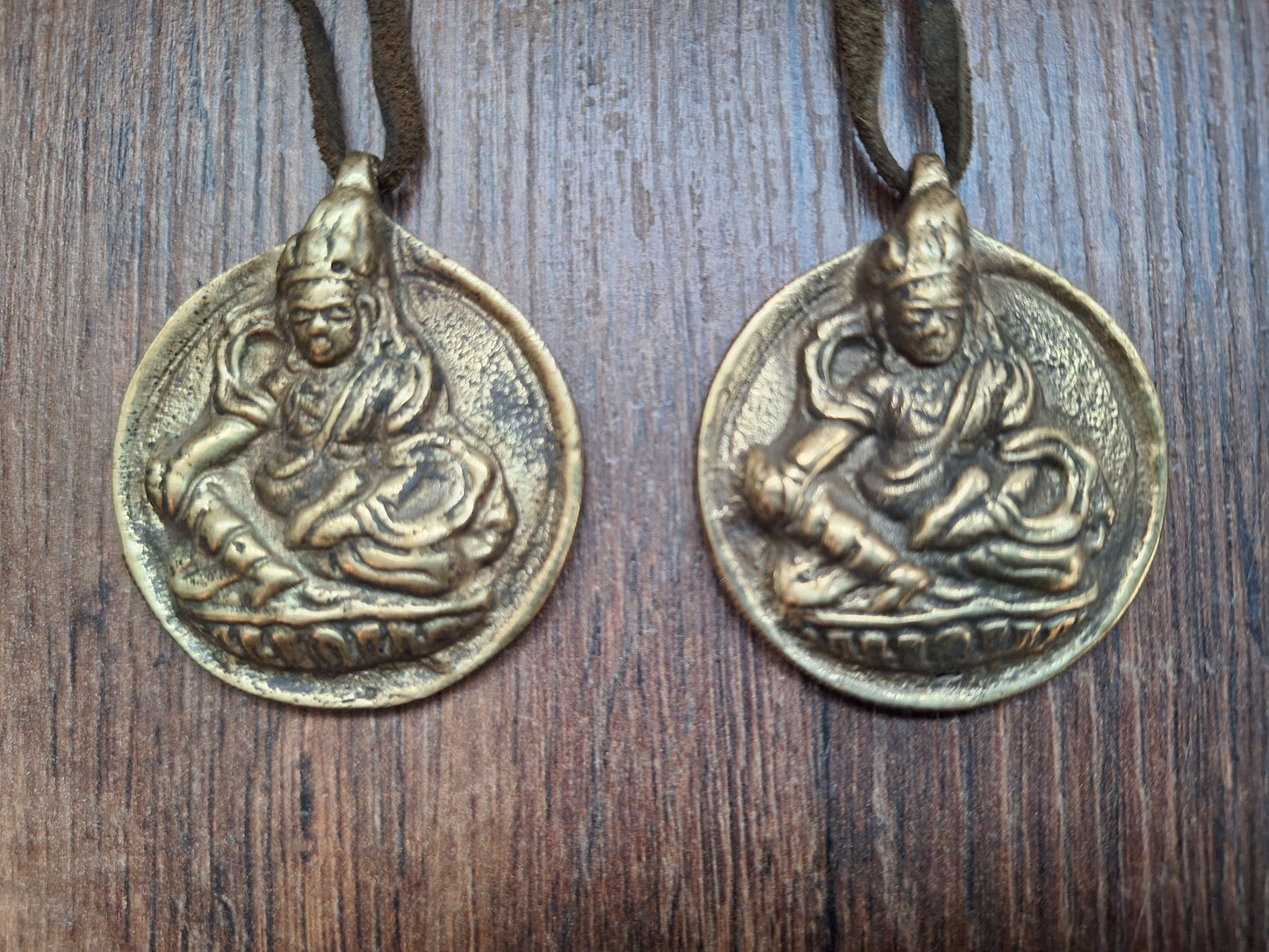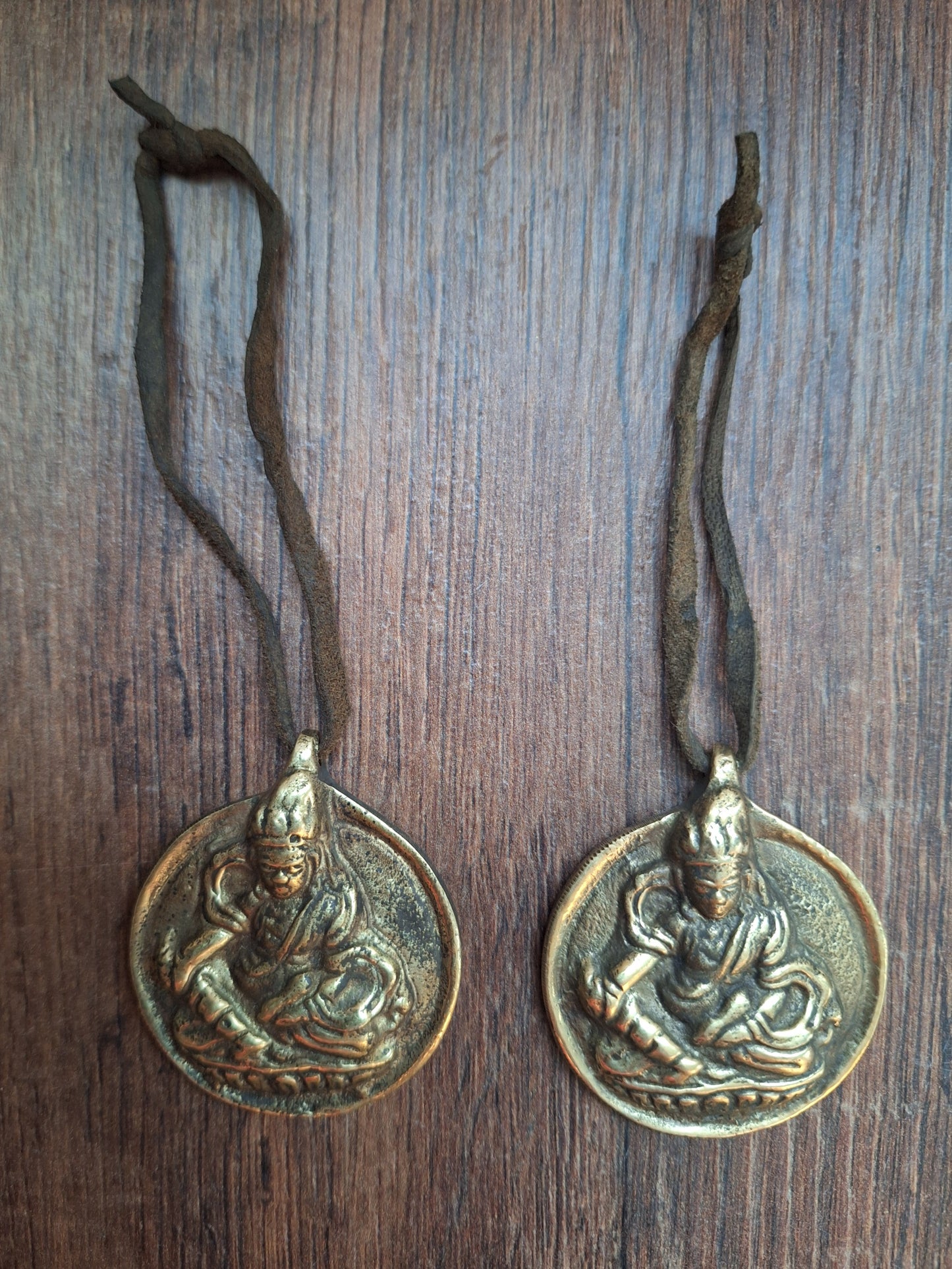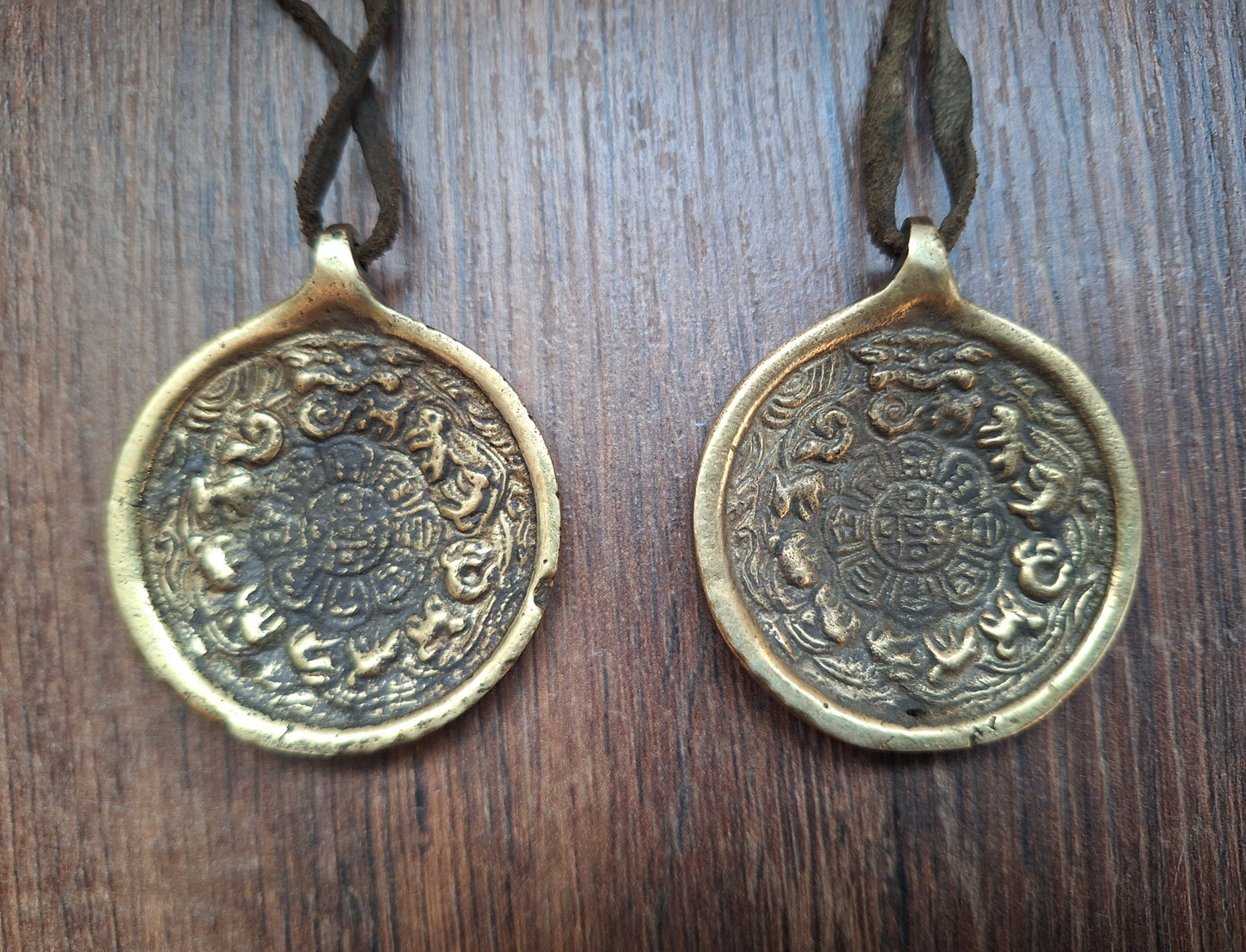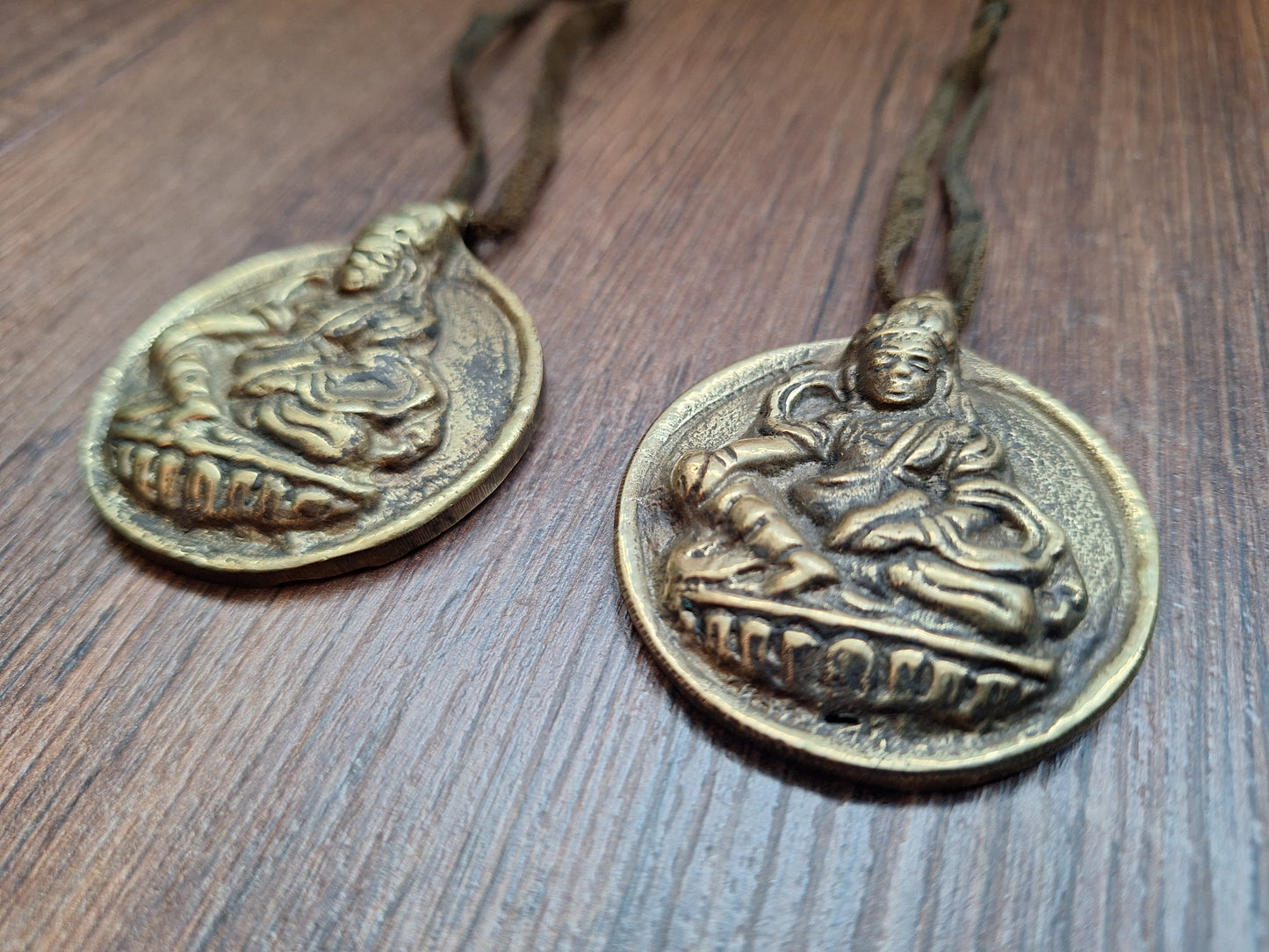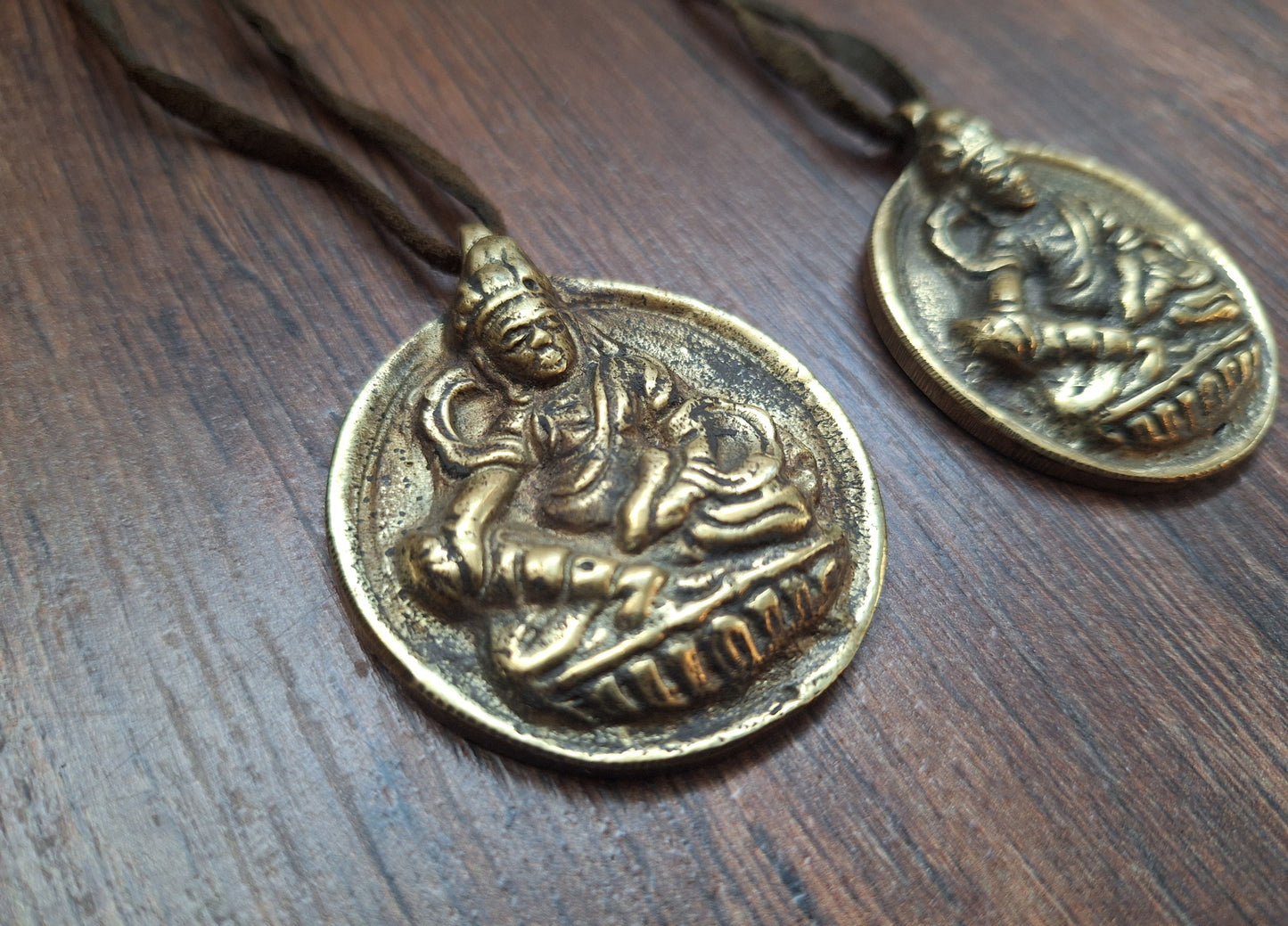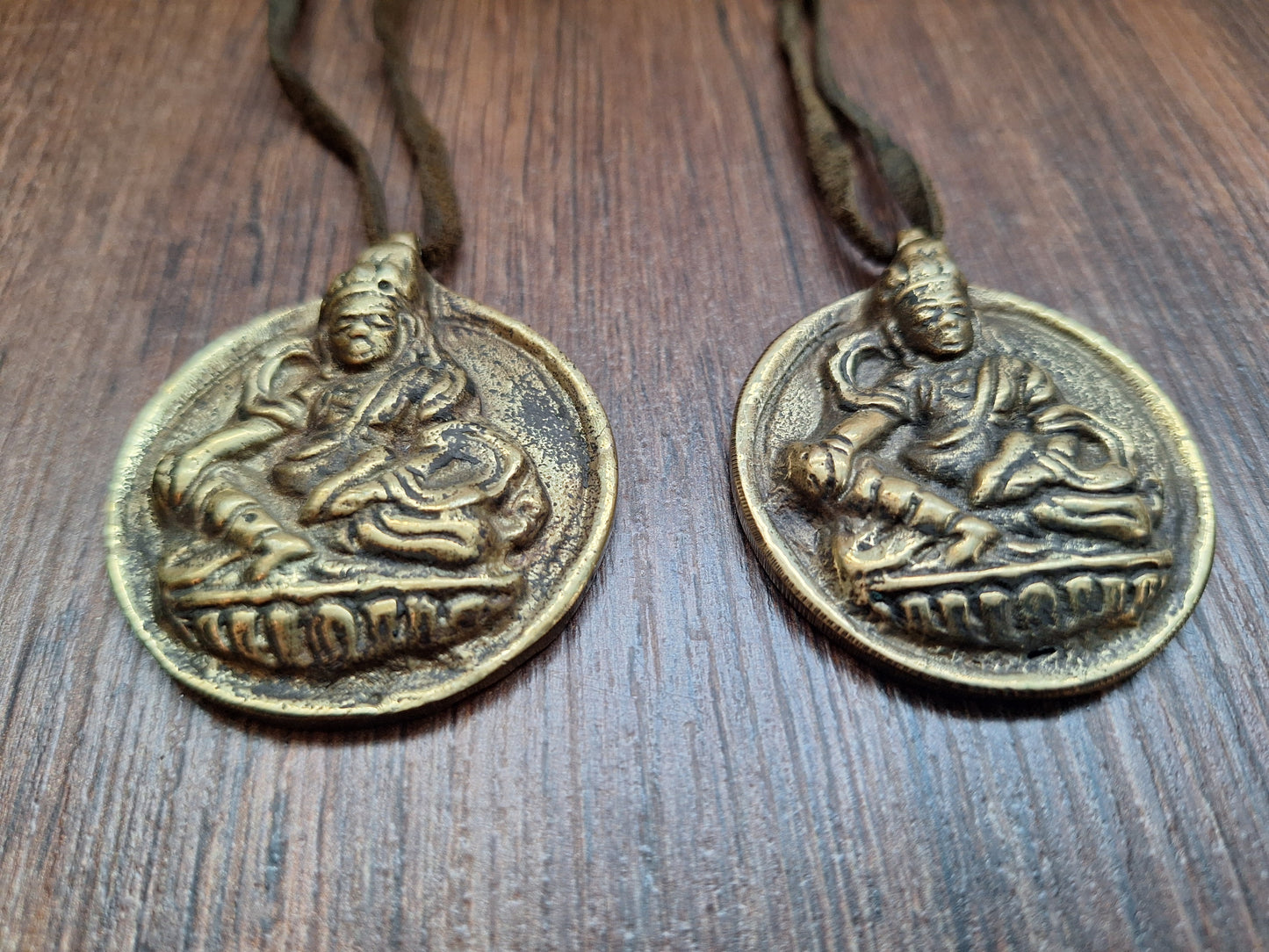Seawolf Shop
Vintage Nepalese melong Dzambala and Si Pa Ho 46 millimeters
Vintage Nepalese melong Dzambala and Si Pa Ho 46 millimeters
Couldn't load pickup availability
Share
Vintage brass mirrors from Nepal, with a diameter of 46 millimeters. These mirrors are made from a thick, heavy layer of brass and beautifully decorated on both sides. In Nepal, mirrors such as these are called 'melong'. They are traditionally often worn on the belt, instead of around the neck.
Multiple ones available, we will handpick one at random for you.
Design characteristics:
On the frontside, a high relief depiction of Dzambala (also named Kubera), the Tibetan god of wealth, can be seen. According to legend, Kubera himself wasn’t born in incredible wealth, but instead in unimaginable poverty. He needed to gain a lot of experience, wisdom and skill along his way to becoming the keeper of all earthly treasures that he is today. Therefore, Kubera is said to especially appreciate those who adequately assess their capabilities, and try to earn not only money, but also a broad outlook and experience.
Kubera rewards those who work hard for an overall rich and full life on all 3 main roads of life; health, career and personal life. He helps to gain, keep and increase not only material and financial wealth, but also a wealth of experience, knowledge and wisdom. He helps to keep a clear overview of where to focus on, where to wisely spend your money, time and energy on and where all this would be wasted and you’d better just stop and walk away.
Kubera is often seen as a deity with 5 different aspects. Each aspect represents wealth on another area of life. This melong shows ‘Yellow Dzambala’. Yellow Dzambala increases wisdom, luck, prosperity and longevity. He contributes in obtaining material and spiritual wealth by becoming a worthy recipient for it. Yellow Dzambala is recognizable by the mongoose in his hand. The mongoose is said to spew a continuous flow of jewels from its jaws, symbolizing a bountiful and unlimited supply of jewels, wealth and auspiciousness.
On the backside of this melong, a depiction of the traditional Tibetan astrological system can be seen; the astrological chart of Si Pa Ho, consisting of three schematic images:
1) In the center the mystical square Me Wa Gu can be seen. In the 9 parts the numbers from 1 to 9 are inscribed, the sum of which in each column is 15. This scheme forms in Tibetan-Mongolian astrology a numerological indication of the relationship between a person and deities and spirits. Each digit governs the year, they replace each other in reverse order.
In China this mystical square has been known since 2200 BCE and is called 'Lo Shu' or Nine Halls diagram; it derives from ancient Chinese mathematical and divination traditions, such as the art of Taoist Geomancy. Nowadays it is also widely known as an important emblem in Feng Shui; the 9 parts (also called 'palaces') then represent the 8 directions of the compass plus the central position, with each part having its own energy.
2) In the ring around the square the 8 trigrams ('Ba Gua') of Par Ha Ge can be seen. The trigram symbols come from very ancient origin; they derive from symbols found on ancient Chinese divination bones dating back as long as 11th century BCE. A related version of bone oracle is still used today by Turkic and Mongolian people, and also in the lineage of Spirit of Wolf Shamanism; 'Khaziki'.
Doubled trigrams form 64 hexagrams, which form the core of the I Ching, the Book of Changes.
Each trigram is a divinatory grapheme and represents different dynamics, energies, cardinal points, animals, seasons etc. In depictions such as on these mirrors, where the 8 of them together form a circle, it symbolizes heavenly order, a healthy balance and right flow of energy.
3) In the outer ring the 12 animals of the eastern zodiac can be seen. Just like the circular arrangement of the trigrams, also this motive adds to the idea of heavenly order. But also its presence, when used on shamanic mirrors, symbolizes control over time and space, an important core principle in the practice of shamanism.
Read more about the origin, design and usage of (shamanic) mirrors in the general description of our webshop collection "Mirrors and Melongs".
